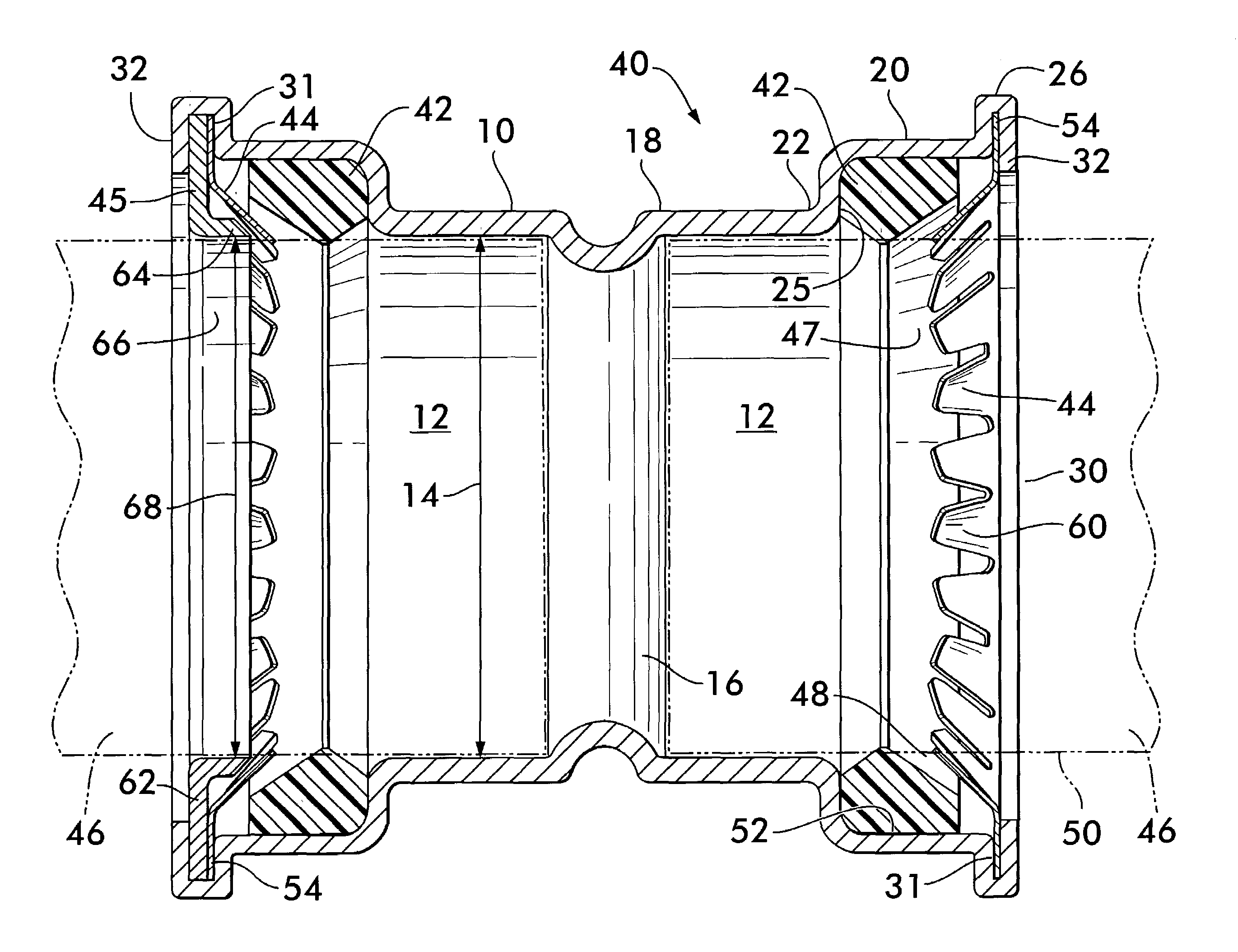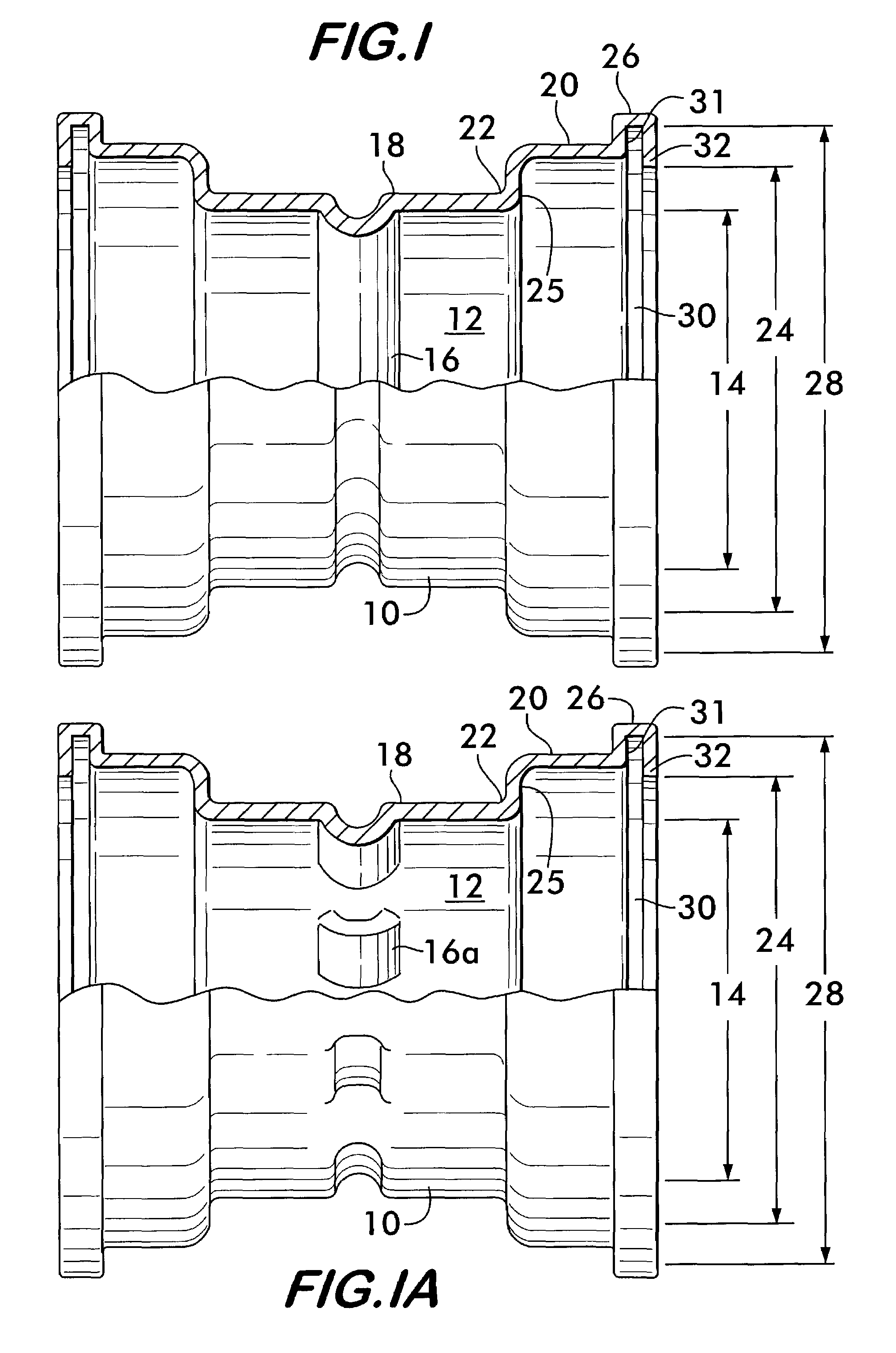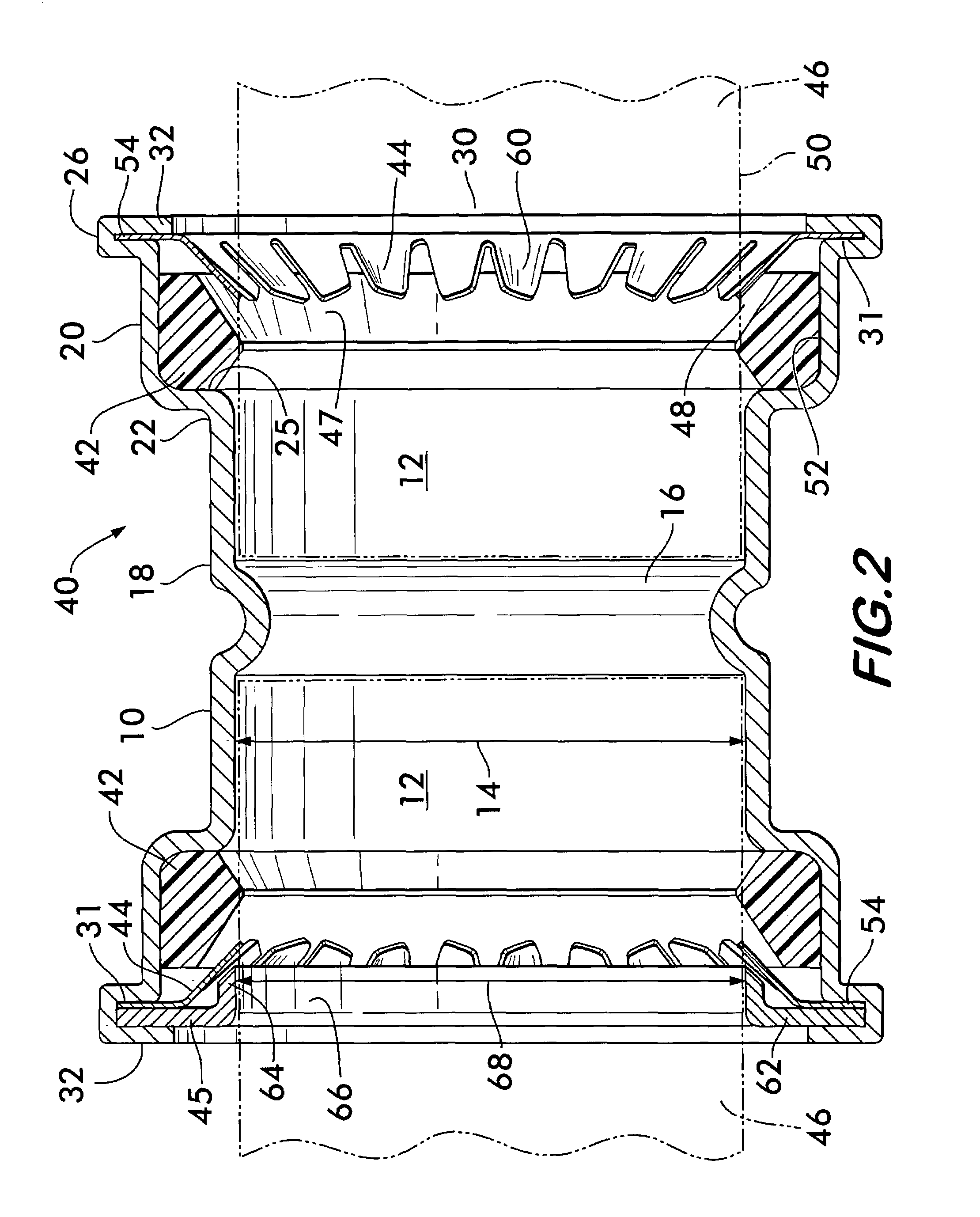Clamping mechanical pipe coupling derived from a standard fitting
- Summary
- Abstract
- Description
- Claims
- Application Information
AI Technical Summary
Benefits of technology
Problems solved by technology
Method used
Image
Examples
Embodiment Construction
[0046]FIG. 1 shows a pipe coupling housing 10 according to the invention having a socket 12 with an inner diameter 14 sized according to a standard to receive a pipe end sized, according to a compatible standard, to interfit within the socket 12. Preferably, coupling housing 10 is a modification of an existing standard pipe fitting, for example, an ASME Standard pipe fitting according to Standard number B16.22a-1998 for wrought copper and copper alloy solder joint pressure fittings. Fittings meeting the specification of other standards, such as the German DIN standard and the British BS standard, may also be modified to derive the coupling housing 10.
[0047]A stop surface 16 is positioned adjacent to one end 18 of the socket 12. Stop surface 16 extends radially inwardly and is, thus, engageable with an end of a pipe received within the socket to prevent the pipe end from passing through the coupling housing. Stop surface 16 is circumferentially continuous around housing 10, but may a...
PUM
 Login to View More
Login to View More Abstract
Description
Claims
Application Information
 Login to View More
Login to View More - R&D
- Intellectual Property
- Life Sciences
- Materials
- Tech Scout
- Unparalleled Data Quality
- Higher Quality Content
- 60% Fewer Hallucinations
Browse by: Latest US Patents, China's latest patents, Technical Efficacy Thesaurus, Application Domain, Technology Topic, Popular Technical Reports.
© 2025 PatSnap. All rights reserved.Legal|Privacy policy|Modern Slavery Act Transparency Statement|Sitemap|About US| Contact US: help@patsnap.com



